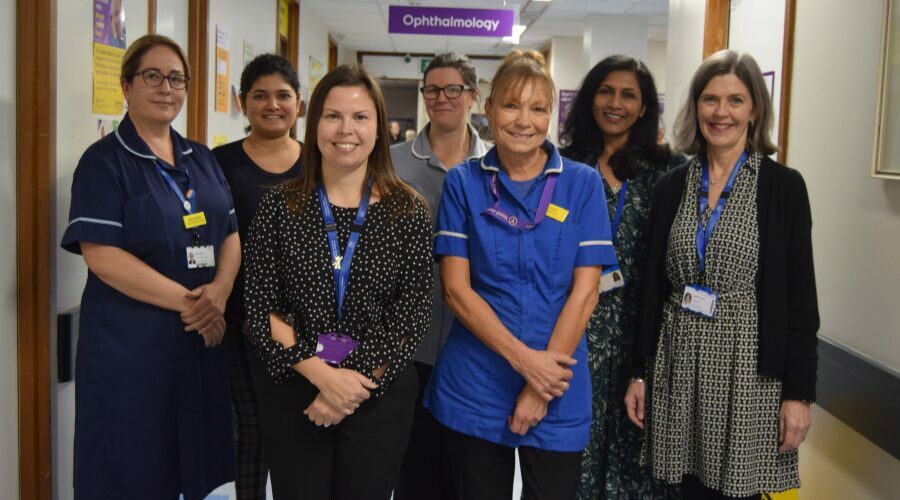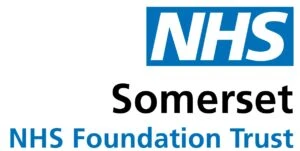
Spotlight
Yeovil Hospital makes significant contribution to innovative glaucoma trial
Our ophthalmology and research colleagues at Yeovil Hospital are among the country's top recruiters of patients into a cutting-edge eye care study.
The ACE trial, also known as a study of technologies for the diagnosis of angle closure glaucoma, was a multi-centre trial, run by leading clinical professor of ophthalmology, Professor Augusto Azuara-Blanco, at the Queen’s University of Belfast.
At Yeovil Hospital, our consultant ophthalmologist, Ms Brinda Shah, led as the principal investigator after she met Professor Azuara-Blanco through her role as south west ophthalmology lead for the National Institute for Health and Care Research.
“The national study team was great to work with, and our research colleagues at Yeovil Hospital did an amazing job in rapidly getting the study set up here,” explains Ms Shah.
“Glaucoma is a lifelong condition, which means we cannot discharge most patients who come into our service, as they tend to need our care and support the rest of their lives to prevent vision loss. It’s an ever-increasing caseload of patients with high prevalence (approximately 4% in over 50s).
“This particular trial looked at just one type of glaucoma – angle closure glaucoma – which makes up about one in five of patients being cared for by our service."
Cochrane reviews, which are collections of high-quality, independent evidence to inform healthcare decision-making, concluded there wasn’t enough evidence to suggest that some of the methods of imaging are as reliable as seeing someone face-to-face.
However, if the ACE study demonstrates effectiveness of decision making from images, it could reduce referrals to the service at Yeovil Hospital and Ms Shah views the ACE study as potentially transformative for managing glaucoma services.
“This is a significant trial, and we’re excited to be part of it," she adds. “For patients, the study is a great opportunity as they receive their scheduled tests, plus additional ones, all in a single hospital visit with no follow-up appointments for the trial.
“On the day that patients come into hospital as part of the study, they'll spend a couple of hours undergoing all necessary tests and imaging with optometrists and nurses or technicians.
“The consultant then conducts a face-to-face consultation, performing gonioscopy to assess drainage angles. Based on this, a clinical decision is made – either laser treatment, observation, or the patient would be discharged from our care.
“In the next stage, we analyse anonymised images from other centres to assess how we interpret them, compared with in-person assessments. This helps validate the reliability of remote testing.
“We have to wait for the study results, but I believe that if the diagnosis could have been made based solely on the images, it could potentially show that in some cases virtual clinics could replace in-person visits, eliminating unnecessary travel and reducing strain on hospital services.
“Alternatively, community optometrists could perform the tests, and new criteria for referral to secondary care could dramatically reduce hospital visits for patients."
Ms Shah focused on efficient patient pathways, incorporating input from the multidisciplinary team.
“This collaborative approach made us one of the top recruiters in the UK," she explains. "We surpassed our target by December 2023 and continued recruiting for seven more months.
“Despite being a small unit, we became one of the top recruiters—an achievement we’re incredibly proud of.
“It has not only boosted our team’s confidence in the impact we can have on research, but the high number of patients we enrolled also reflects our collective enthusiasm and commitment."
When conducting the study, our ophthalmology and research colleagues reviewed the referrals to identify eligible patients, and if suitable, patients receive comprehensive study information.
Ms Shah continues: “Organising the day of trial visit required collaboration with our managers to ensure the right skill mix availability, which posed challenges. The early involvement of colleagues in trial planning was crucial as they were instrumental in helping us overcome obstacles.
“I’m so proud that we’ve played such a huge part in this trial and it’s so great for our patients to know that we’re involved in something that will help us prepare better for future increase in demand on services.”

